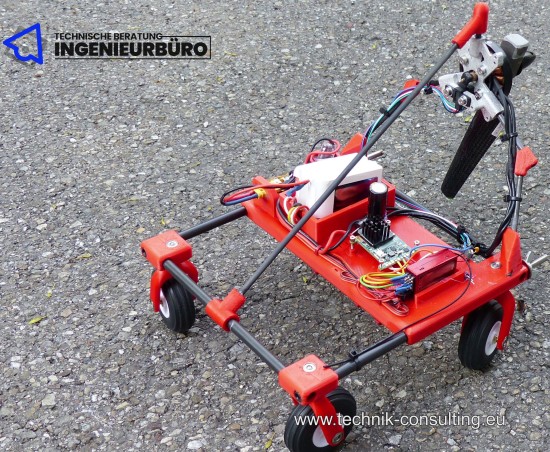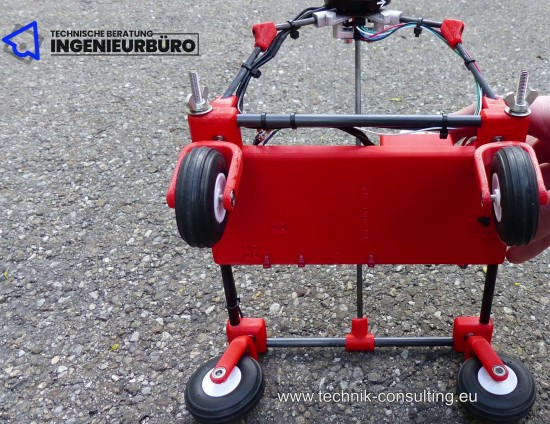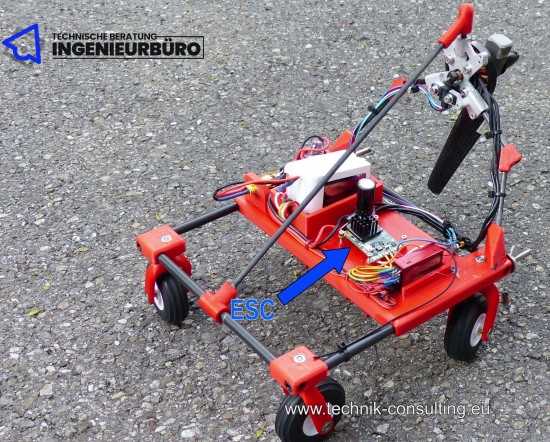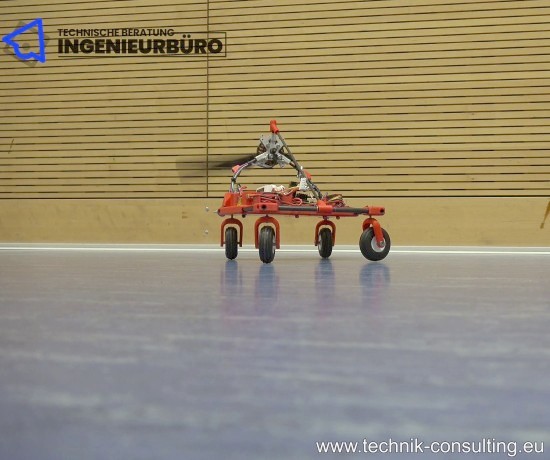World's first car with a motor for drive and steering
The vector drive can be used universally. This makes it easy to build vehicles that only need one engine. This is unique in the world and is demonstrated using a vehicle.The steering forces are generated by this one propeller. No other motors or actuators are required. The propeller is a simple one-blade propeller with no moving parts. How it works is explained here.

Foto: Dirk Brunner; Lizenz: CC BY SA 3.0

Foto: Dirk Brunner; Lizenz: CC BY SA 3.0
Propulsion and steering at the same time
The propeller generates propulsion and is also responsible for the steering. For example, if the car is to make a right turn, the propeller (viewed from behind) turns faster in the left area than in the right area. This creates more thrust on the left than the right and the car turns right. Sounds easier than it is. It is based on a sophisticated algorithm that runs on a simple processor despite complex calculations.
Foto: Dirk Brunner; Lizenz: CC BY SA 3.0
Recuperation brake for propellers
The motor controller is programmed in such a way that when braking, the energy that was needed for acceleration shortly before is returned. The efficiency is high thanks to this recuperation brake.
Foto: Dirk Brunner; Lizenz: CC BY SA 3.0
Advantages of the vector propeller drive system
The advantages of this drive system are obvious:- Extremely few components to build a fully controllable vehicle
- No complex mechanics required for the steering
- High efficiency through recuperation
- One drive module for different applications
- Very powerful
In addition to cars and boats, there are countless other applications, such as in drones. Some are already in research. Let yourself be surprised.
If you know any use cases yourself or are interested in the technology, please get in touch.
